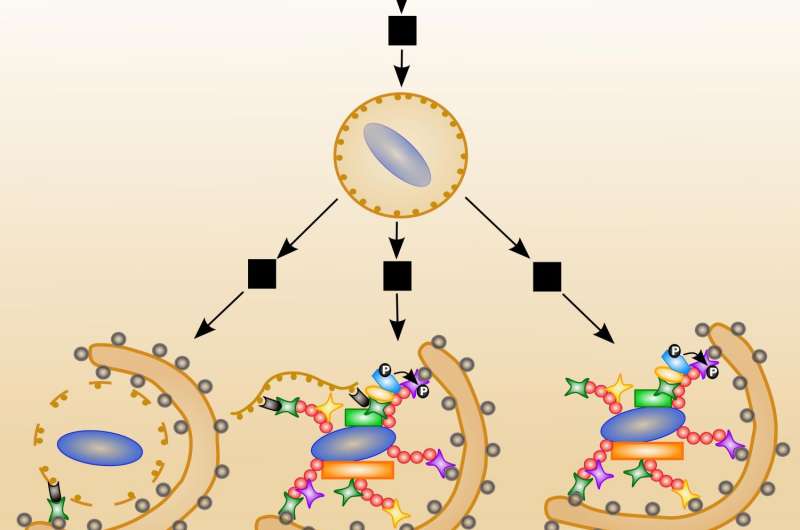Scientists create first viable mathematical model of a key anti-Salmonella defense system

Scientists have created the first validated mathematical model of an important cellular defense mechanism against the bacterium Salmonella, according to a new study in PLOS Computational Biology.
Worldwide, Salmonella is responsible for millions of infections and thousands of deaths every year. When Salmonella enters a human cell under certain conditions, a process called xenophagy may target the bacterium for destruction. Understanding how cells defend against Salmonella is essential to develop new treatments, but xenophagy is not yet well-understood.
In the new study, "wet lab" scientist Ivan Dikic and the bioinformatics team of Ina Koch at Goethe University Frankfurt used existing knowledge of molecular interactions, combined with a computer science technique called Petri nets, to build a mathematical model of xenophagy.
To test the model, the researchers investigated what would happen when several proteins in the xenophagy process were virtually perturbed—a technique known as in silico knockout. The results of this computer-based perturbation were consistent with data from lab experiments in which the same proteins were perturbed, confirming that the model accurately reproduces known parts of the xenophagy process.
The scientists also proposed a potential new mechanism for one of the proteins involved in the xenophagy process. This and other hypotheses suggested by further in silico knockout investigations could be tested in lab experiments.
"The in silico knockouts formulate hypotheses for future experimental studies towards a better understanding of the cellular antibacterial defense and towards a better treatment of illnesses caused by Salmonella infection," says study first author Jennifer Scheidel.
More information: Scheidel J, Amstein L, Ackermann J, Dikic I, Koch I (2016) In Silico Knockout Studies of Xenophagic Capturing of Salmonella. PLoS Comput Biol 12(12): e1005200. DOI: 10.1371/journal.pcbi.1005200
Journal information: PLoS Computational Biology
Provided by Public Library of Science

















